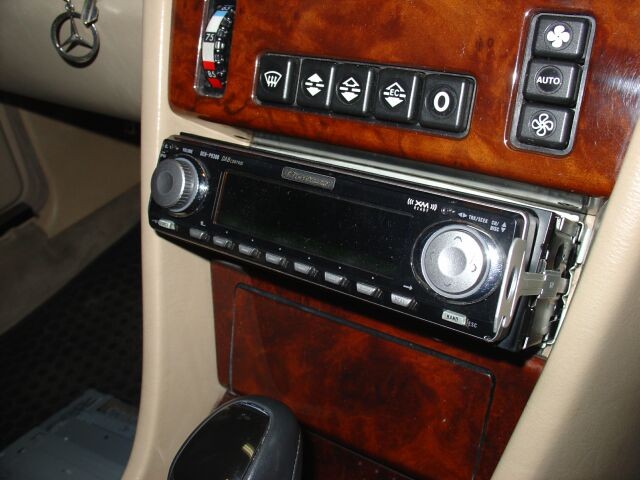The Pioneer DEH-P9300 was a high-end car stereo known for its rich features and excellent sound quality. However, lacking MP3 playback capability, it might feel dated for today’s needs. This article details upgrading a car’s stereo system, replacing a DEH-P9300 with a modern unit, adding a subwoofer, and installing a keyless entry system with a Mercedes-style flip key.
Upgrading the Head Unit
The original Pioneer DEH-P9300, while a quality unit, was limited to audio CDs. Using Pioneer removal keys, the old unit and its accompanying 12-disc CD changer were removed. The wiring was cleaned up before installing the new head unit.
A Pioneer DEH-P8MP Premier was chosen as the replacement. This modern head unit features a built-in MOSFET 60-watt amplifier, a significant upgrade from the DEH-P9300’s 50 watts. While lacking some of the sound shaping features of the P9300, the P8MP offers superior power and excellent sound quality, effectively driving the car’s existing speakers. The front 4″ dash speakers and rear 5.25″ speakers are powered directly by the head unit, while the door speakers are powered by a separate ADS amplifier.
Enhancing Bass with a Subwoofer
To improve the low-end sound, an Infinity Basslink T was installed. This powered subwoofer features a 10″ driver flanked by two passive radiators and a built-in 250-watt amplifier. Its 40″ length fits perfectly within the trunk of the car.
The trunk carpet, spare tire, and accessories were removed to prepare for the subwoofer installation. This allowed for a clean installation and prevented accidental damage to the spare tire during drilling.
Mounting holes were drilled, and to prevent the mounting screws from puncturing the spare tire, they were trimmed flush with the plastic spare tire cover using a Dremel tool. The Basslink was secured with straps to the underside of the rear deck for added stability. Power and ground cables were connected directly to the battery using a JL Audio installation kit.
The Basslink’s remote volume control was installed in the headlight trim panel on the dashboard for convenient access.
Installing Keyless Entry
A keyless entry system with a full-featured alarm and flip-key remotes was also installed. The installation process focused on integrating the system with the car’s existing vacuum-operated door locks.
The installation primarily involved working with the vacuum motor located under the rear passenger seat. Two SPDT relays were used to interface the keyless entry system with the Mercedes’ single-wire door lock system.
To enable the keyless entry system to arm and disarm the factory alarm, connections were made to the factory alarm brain. Specific pins on the alarm brain connector were identified for triggering the arm and disarm functions.
The OE steel key was modified to fit the flip-key remote. This required careful cutting and grinding using a Dremel tool and files to match the shape of the flip key blank.
The completed installation resulted in a fully functional keyless entry system that integrates seamlessly with the car’s factory alarm and central locking system. The upgraded stereo system provides significantly improved sound quality and modern features, completing a comprehensive car audio and security upgrade.

